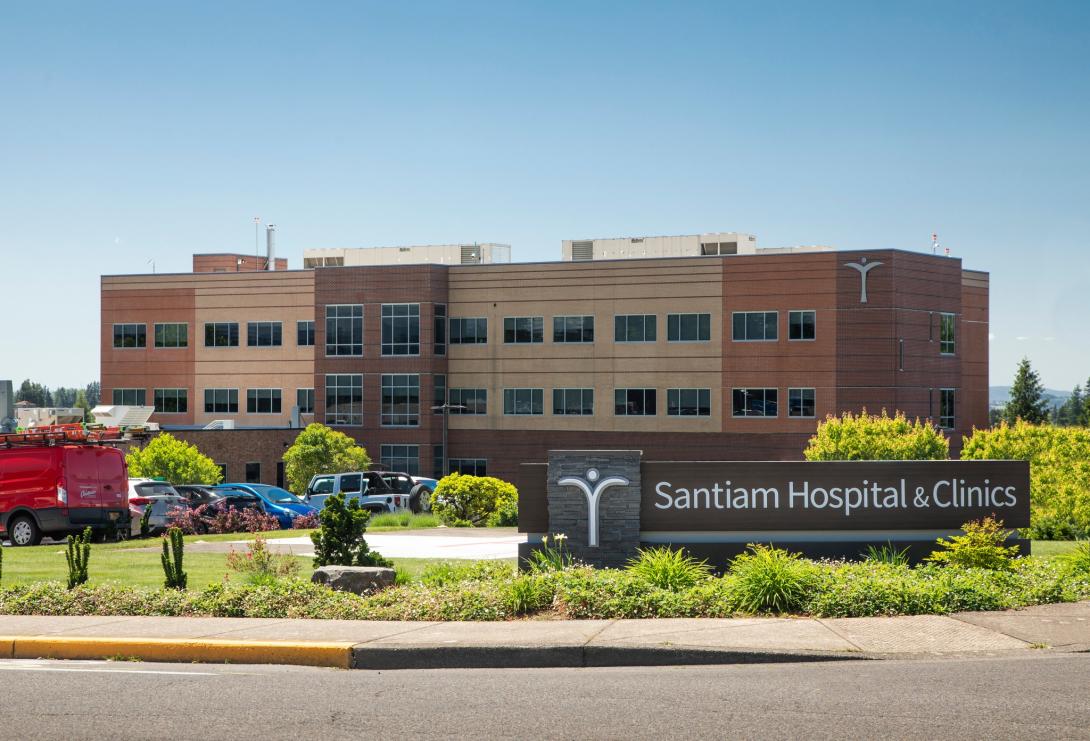
One year ago the leaders of two Willamette Valley hospital systems said they needed to join forces to withstand the pressures that are building on hospitals nationwide, especially in rural America. Then, last month, with virtually no explanation, they called it off.
Corvallis-based Samaritan Health, which dominates health care in its core territory of Benton, Linn, Lincoln and parts of Marion and Polk counties, joined with the much smaller, Stayton-based Santiam Hospital and Clinics to tell the Oregon Health Authority last November that a merger would be in the best interest of the health systems and the patients they serve.
Santiam, in particular, described it in filings as a matter of survival. For Samaritan, a merger would extend its territory deeper into the Marion County market while helping to build what then-CEO Doug Boysen called “economies of scale.”
Boysen retired from Samaritan Health last month and was replaced as president and CEO by Marty Cahill, a longtime Samaritan Health executive who most recently served as chief operating officer. Shortly after he became president, leaders of Santiam and Samaritan Health jointly said in a filing they would stop trying to fold Santiam into the Samaritan Health system, but would seek “ways to collaborate that might benefit the health and well-being of the community from the mid-Willamette Valley through the central Oregon coast regions.”
The precise reasons the two broke it off are unclear, but one possibility could be changing circumstances. The merger application had stressed the desire to maintain local control and “local hospital governance” while noting Santiam leadership’s “proud” tradition of “independence.”
Two months, later, however, word spread that low government reimbursements had Samaritan considering an outside partner or purchaser; as that system’s leader, Boysen, told The Lund Report, “all options are on the table.”
Santiam Hospital CEO Maggie Hudson said in an email the decision to call off the merger was a mutual one, and wasn’t triggered by Samaritan’s change of leadership. And she said Santiam recognizes it still needs an outside partner for financial help.
“Although Santiam's financial position improved over the previous year, the healthcare landscape is undergoing unprecedented transformation. We still believe a future affiliation will enable Santiam to better meet the healthcare needs of our communities for decades to come.”
Samaritan Health officials didn’t respond in detail to queries from The Lund Report, but restated by email that Samaritan and Santiam “carefully explored all aspects of affiliation and mutually decided not to move forward.”
While the thinking about a merger changed in Corvallis and Stayton, the financial pressures building against hospitals, especially rural hospitals, are only growing. The nonpartisan Center for Healthcare Quality & Payment Reform said recently as many as 700 rural hospitals, including three in Oregon, are at immediate risk of closing. Most rural hospitals, the center says, lose money on patient services because insurance reimbursements don’t account for the higher cost of delivering health care in relatively small facilities outside urban areas.
The trend has hospitals cutting back on services they deem less profitable — particularly in less affluent communities. That hurts access, creating delays and other barriers to needed care.
In a filing with the Oregon Health Authority in support of the merger, Santiam said that as of July 31, 2024, the system had 53 days cash on hand and was showing a negligible profit margin in a field that considers 3% the benchmark margin needed to invest in improvements. The filing cited these problems as supporting the merger: “Santiam realizes that it is no longer in its or the community’s best interest to continue to push against these significant headwinds on its own. In fact, doing so would imperil its ability to remain viable.”
Samaritan Health, while much larger, lost money in each of the last two years and also has been forced to economize. Since last year, Samaritan, which employs more than 6,000 people, cut 200 jobs systemwide and reduced hours for some employees and temporarily reduced executive pay. Last month, Samaritan acknowledged it is considering closing its birthing center in Lebanon and its maternity ward at the Samaritan North Lincoln Hospital in Lincoln City, a possibility that has drawn public protests. In a prepared statement, Samaritan’s Cahill said system officials were also conducting an “initial evaluation” of whether it can continue to sustainably provide “general surgery, orthopedics, women and children’s and urology.” No decisions, he said, will be made for several months.
Calling off the deal with Santiam will save Samaritan some $27 million in promised investments, including a pledge to build a $15 million medical office building in Stayton. Terminating the deal also means Samaritan will not assume approximately $25 million in Santiam’s debts to the federal government and to Key Bank.
Nick Budnick contributed reporting.